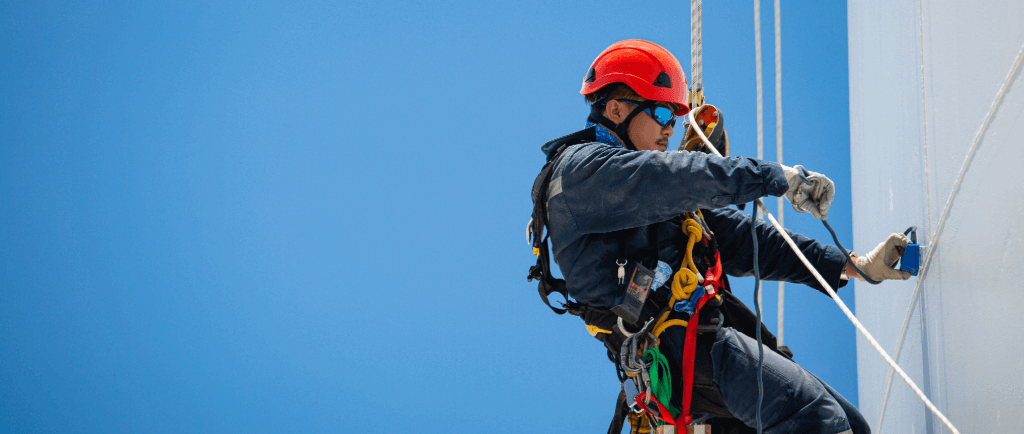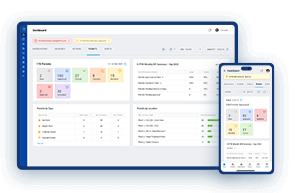
Understanding the Risks of Working at Heights
Introduction to Working at Heights
Working at heights involves any job where a fall from elevation could cause injury. This isn’t limited to skyscrapers or tall buildings; it includes tasks like roof repairs, scaffolding setup, and ladder use in warehouses. The risk of gravity unites these varied industries.
Why the high risk? A fall from height can lead to serious injuries or fatalities. It’s not just about the person up high; dropped tools can endanger those below. From painters on ladders to construction workers on beams, the risks are significant.
Statistics highlight the dangers. Globally, falls from height are a leading cause of occupational fatalities and serious injuries, especially in construction, where they constitute nearly one-third of all job-related deaths. Beyond fatalities, these incidents can cause fractures, head injuries, and lasting disabilities. These figures are a stark reminder of the importance of safety in elevated work situations.
Common Risks and Hazards
Working at heights comes with a variety of risks that can lead to accidents if not properly managed. The most apparent danger is the risk of falling, which can occur from ladders, scaffolds, roofs, or through fragile surfaces. Each setting presents unique challenges; for instance, scaffolding might offer a solid platform but requires meticulous assembly to prevent collapses, while roofs can be slippery or unstable. Another hazard is falling objects. Tools, materials, or even parts of the work structure itself can become deadly if they fall, posing a risk to those working below or passing by the area.
Environmental factors add another layer of risk. Adverse weather conditions, such as high winds, rain, or ice, can drastically increase the likelihood of accidents by making surfaces slippery and reducing visibility. Electrical hazards are also a concern, especially when working near power lines or during stormy weather. Even the quality of the air at high altitudes can be a factor, with wind speed increasing and temperatures dropping.
Related read: Our listing of the best Control of Work software.
Factors Contributing to Height-related Accidents
Several factors contribute to the high incidence of accidents associated with working at heights, highlighting the need for comprehensive safety measures. One major factor is inadequate risk assessment and planning. Without a thorough evaluation of the potential hazards and the development of a plan to mitigate these risks, workers are left vulnerable to accidents. This includes not only identifying risks but also ensuring that the necessary safety equipment and measures are in place and properly used. Another significant factor is the lack of proper training and equipment.
Human factors also play a critical role in the occurrence of accidents. Complacency, overconfidence, or lack of awareness can lead to shortcuts being taken or safety procedures being overlooked. This is particularly dangerous when combined with the physical demands of working at heights, which can lead to fatigue and reduced attention to safety practices.
Additionally, poor communication among team members and supervisors can result in misunderstandings and mistakes that jeopardize safety.
Impact of Accidents
The consequences of accidents from working at heights extend far beyond the immediate aftermath of an incident. For the individuals involved, the physical injuries can be severe and life-altering. Falls from height often result in broken bones, spinal injuries, and head traumas, which can lead to long-term disabilities or, in the worst cases, fatalities. The psychological impact on victims and their families can also be profound, encompassing trauma, anxiety, and the stress of potential financial instability due to loss of income or medical expenses.
For organizations, the ramifications of height-related accidents can be equally devastating but manifest in different ways. Financially, the costs can be significant, including medical expenses, compensation claims, and increased insurance premiums. There’s also the potential for operational disruptions, as accidents can lead to downtime and the loss of skilled labor. Beyond the immediate financial and operational impacts, companies face reputational damage.
Preventative Measures and Best Practices
Preventing accidents at heights begins with a thorough risk assessment to spot potential dangers early. Consistent training ensures everyone is equipped with the knowledge to stay safe. Essential safety gear and the correct equipment are must-haves for any height-related work. Yet, fostering a safety-first mindset is what truly makes a difference.
Safetymint’s Permit to Work system is pivotal here. It simplifies creating work at height checklists, enabling contractors to easily request permits. With an intuitive template builder, companies can customize permit checklists for various tasks. Users benefit from automated notifications and alerts within workflows, ensuring seamless communication and adherence to safety protocols. Accessible via web browsers and mobile apps, this PTW system supports a dynamic work environment.
Safety is a team effort. Engaging workers in safety practices and fostering a culture that prioritizes well-being is vital. Open communication, ongoing education, and recognizing safe behaviors encourage everyone to play their part. Creating and maintaining a strong safety culture ensures that best practices are not just followed but embraced, making every height-related task as safe as possible.
Ben Johnson is a dedicated Customer Success Executive at Safetymint. With a strong commitment to excellence, Ben works closely with customers to ensure they fully leverage the capabilities of Safetymint to its fullest potential, aiming to significantly reduce or mitigate safety risks and incidents.




